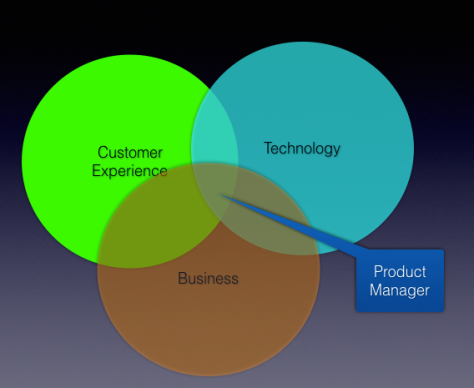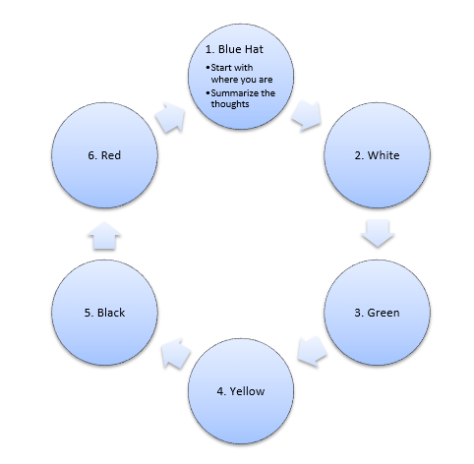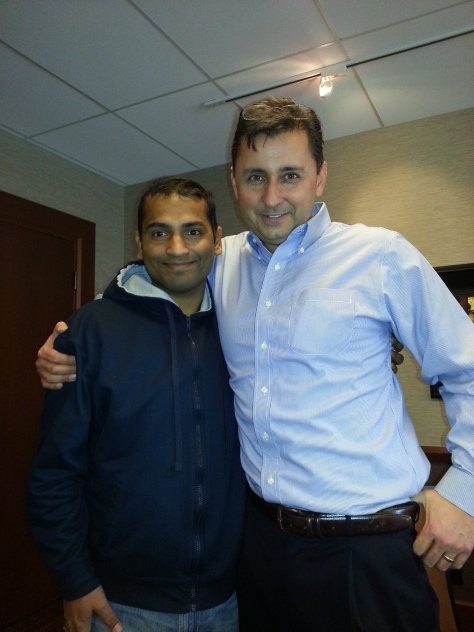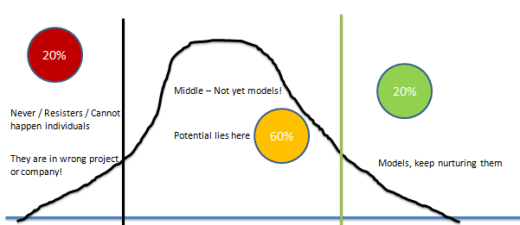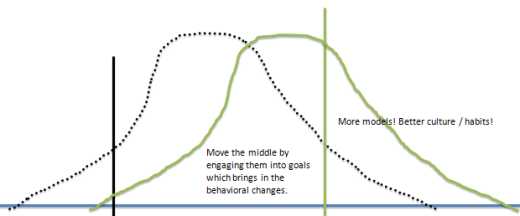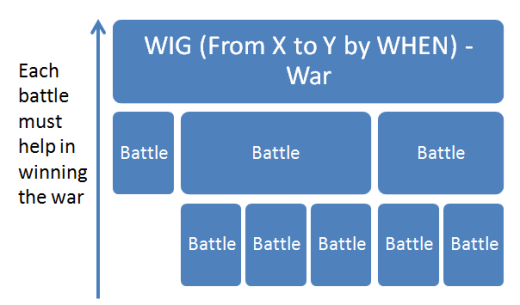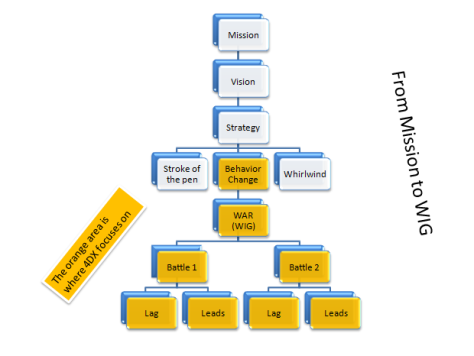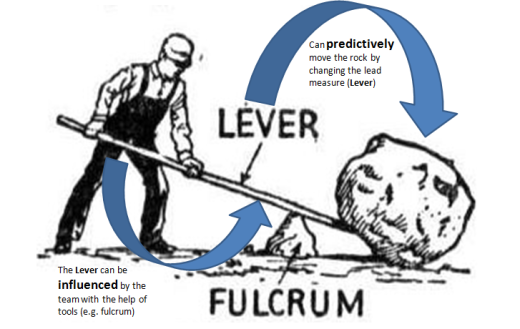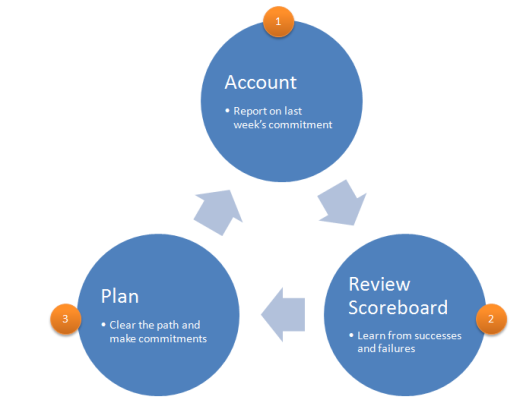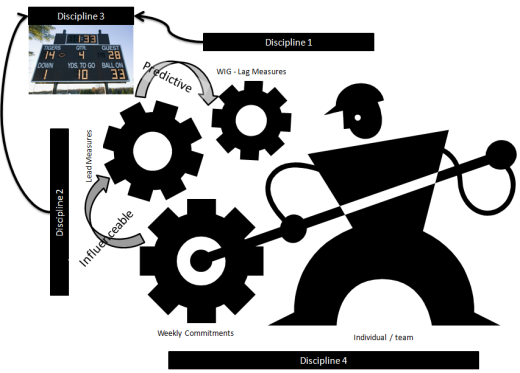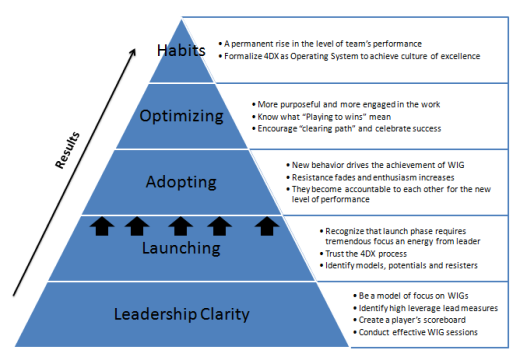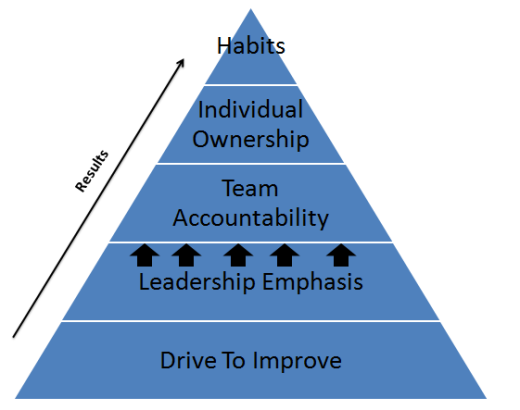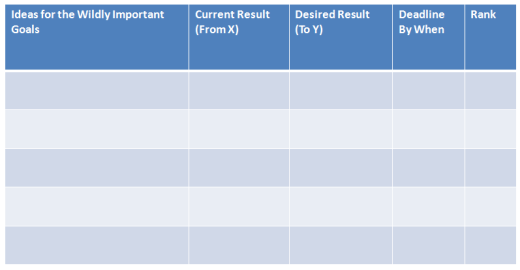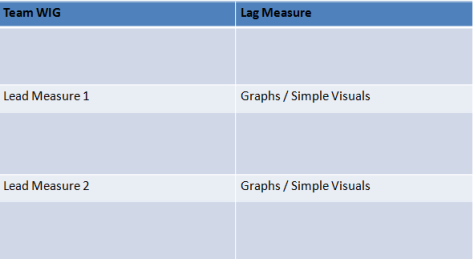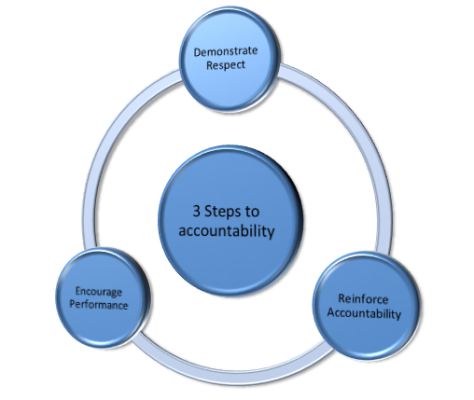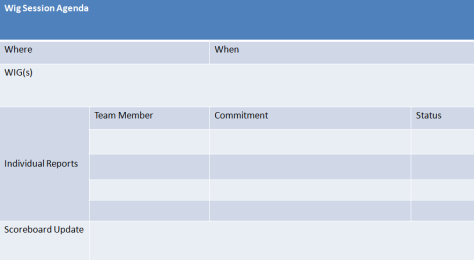Introduction
This book starts with a great statement,”Every day there is a new question“. Jack Welch has tried to put the commonly asked questions and their answer from his experience into this book. While the initial part of book looks like as if it is meant for the executives or large and mid size companies, in the later part he has talked about career specific questions. Overall, since the book is all about people, the concepts and examples can be a great learning resource for company of any size. He has to grouped these questions in such a way that it makes sense to a larger audience (CXOs, A Junior level employee, a student, etc.). Mr. Welch says that most of the questions boils down to the question “What does it take to win?“. That is what this book attempts to teach to the audience.
This book is divided into following sections
- Underneath It All : Which gives you an overview about
- the importance of a strong mission and concrete values
- absolute necessity of candor in every aspect of management
- the power of differentiation – a system based on meritocracy – be fair and effective
- the value of each individual receiving voice and dignity – every brain in the game
- Your Company : This part gives you an overview about the internal part (mechanics) of the organization – people, process and culture. It gives you numerous real examples on
- Leadership
- Hiring
- People Management
- Letting People Go
- Managing Change and
- Crisis Management
- Your Competition : This section discusses about
- how you create strategic advantages
- devise meaningful budgets
- grow organically
- grow through mergers and acquisitions
- reduce variances through quality programs like six sigma
- Your Career : this section is about managing the arc and the quality of your professional life. It talks about
- finding the right job at any point in your career
- what it takes to get promoted
- hard spot we all find ourselves in at one time or another
- work-life balance
- Tying Up Loose Ends : This section talks about the questions which could not be put into certain (or above) categories.
Facts and Definitions
- Winning is great. Because when companies win, people thrive and grow. There are more jobs and more opportunities.
- Winning lifts everyone it touches – it just makes the world a better place.
- You cannot be “all things to all people at all times”
- Setting the mission is top management’s responsibility. A mission cannot, and must not, be delegated to anyone except the people ultimately held accountable for it.
- We are socialized from the childhood to soften bad news or make nice about awkward subject
Notes
Underneath It All
Mission and Values (means to ends)
As an employee or business owner often we lack clear and effective mission and values. While these things do change over time and in fact take time to define, they do help you to take correct decision – specially when the situation is tough.
Mr. Welch says that the vision should be so clear to every employee that when you wake him / her up at 12:00 AM in the night, they shall be able to tell your company’s exact vision.
I really liked his pun on what should not be part of mission (because that is basic requirement for your existence). In fact which company doesn’t value
- quality and service
- focus on its customers
- integrity
- excellence
- respect
- profitable
- increase value for the stakeholders
Hence above list MUST be in the DNA of every employee to be inside your company.
I truly loved his definition of mission and values where he says “The mission announces exactly where you are going, and the values describe the behaviours that will get you there.“.
At the end of the day, effective mission statements balance the possible and the impossible. They give people a clear sense of the direction to profitability and the inspiration to feel they are part of something big and important.
The mission primarily has to answer the question “How do we intend to win in this business?” This question requires companies
- to make choices about people, investments, and other resources
- delineate their strength and weakness in order to access where they can profitably play in the competitive landscape
- give people clear set of direction to profitability and inspiration
On the values
The actual process of creating values, incidentally, has to be iterative, probably initiated by the executive team, and finalized through the involvement of people all over the organization.
The importance of mission and aligned value is explicitly explained in this book and it does emphasize that “while your company may not collapse due to lack of mission and aligned values, it will definitely not reach its potential”.
Candor
There are three ways through which the Candor leads to winning
- It gets more people in conversation, which means rich idea
- It generates speed – surface, debate, improve and decide
- It cuts cost – due to increased efficiencies
It is easy for people to be less candid as they often perceive that by being candid they may sound like a jerk. People are comfortable with “If you don’t challenge mine, I will not challenge yours idea.”. That IS NOT the behaviour of a team player.
To get Candor, you reward it, praise it, and talk about it. Make public heroes out of people who demonstrate it. Most importantly, you yourself demonstrate it in exuberant and exaggerated way – as candor works because candor unclutters.
Differentiation
Differentiation happens to be the fairest, the kindest, most efficient and most effective way to manage your people (the software part of the company) and business (different business, product lines, etc.).
People Part – Mr. Welch divides people into 3 parts, 20-70-10, and has some great suggestions for each parts
- For the top 20 – the stars – he advocates that they need to be treated like a star (bonus, praise, stock option, love, training, flexibility, etc. etc.).
- The middle 70% are enormously valuable to the company and they need to be engaged and motivated – through training, feedback, and thoughtful goal settings
- For bottom 10% they have to go from this project / department / company to a place (where they actually belong) where they will be valued better and they can contribute better.
A very good performance management system often makes it very clear about who are the stars and who are in bottom 10%. Also, the middle 70% is reasonably clear with certain feelings on the edges. Specially the challenge is to manage the top tier of the 70% who could not be categorised as stars – the silver lining!
He gives an amazingly simple example of play field where differentiation is extremely evident that if a team has to win the game then the best players actually plays at the position identified using his / her strength (people know where they stand) while the lesser player waits for their turn. The top player performs hard (keep getting better) to keep himself / herself on top and the lesser players work hard to get into the game. Of course lesser players who is towards the bottom, can be the best doctor, engineer, etc and that is why Mr. Welch says that such people need to move on.
Without differentiation you create a merit free system, which eventually destroys itself.
Protecting under-performers always backfires. The worst thing, though, is how protecting people who don’t perform hurt the people themselves. If you have been nice and sugar coated with them then when you eventually let them go, they will be surprised and highly unprepared.
In a team, differentiation rewards those members who deserves it. Also, it is always fun and exciting when team wins.
Bottom line
Your people should always know where they stand in terms of their performance.
Voice and Dignity – Every brain in the game
Every person in this world wants voice and dignity, and every person deserves them.
- Voice : people want the opportunity to speak their minds and have their ideas, opinions, and feelings heard, regardless of their nationality, gender, age, or culture
- Dignity : people inherently and instinctively want to be respected for their work and effort and individuality
Some people have better idea than others; some are smarter or more experienced or more creative; some people are hard working. But everyone should be heard and respected — they want it and you need it. When every brain (positively speaking) is in the game the productivity explodes.
Your Company
Leadership
Before you are a leader, success is all about growing yourself. When you become a leader, success is all about growing others.
WHAT LEADERS DO?
- Leaders relentlessly upgrade their team, using every encounter as an opportunity to evaluate, coach, and build self-confidence.
- Evaluate — right people in right job
- Coach — guiding, critiquing and helping to improve
- Build self-confidence (fuel of winning team) –pouring out encouragement, caring and recognition – for those who have earned it
- Leaders make sure people not only see the vision, they live and breathe it
- Leaders get into everyone’s skin, exuding positive energy and optimism — by displaying can-do attitude about overcoming any challenge.
- Leaders establish trust with candor, transparency, and credit.
- fight the impulse to pad or diminish hard messages
- give credit where it is due – generously pass praise when things are good and in bad times take responsibility for things which have gone wrong
- don’t kiss up and kick down
- Leaders have the courage to make unpopular decisions and gut calls.
- You are not a leader to win a popularity contest — you are leader to lead people to get best out of them — your job is to listen and explain yourself clearly but move forward.
- When you have uh-oh kind of feeling in your stomach, listen to your gut and don’t hire / engage that person
- Leaders probe and push with a curiosity that borders on skepticism, making sure their questions are answered with action.
- While as an individual contributor you were expected to be an expert, as a leader your job is to ask quality questions (What if, why not, How come) to raise debate and generate actionable items, which get actioned
- Leaders inspire risk taking and learning by setting the example.
- Your can create a culture that welcomes risk taking by freely admitting your mistakes and talking about what you have learned from them
- Leaders celebrate
- Create atmosphere of recognition and positive energy by celebrating success as it makes people feel like winners
I liked the statement which says “Anyone can manage for short term – by keep squeezing the lemon and anyone can manage for the long term – just keep dreaming. You were made a leader because someone believed you could squeeze and dream at the same time — performing balancing acts everyday is Leadership.”
Hiring
“Hiring good people is hard. Hiring great people is brutally hard. And yet nothing matters more in winning than getting the right people on the field.”
For hiring Mr. Welch has following recommendations
- 3-Acid Tests (before even you think about hiring someone)
- Integrity
- People with integrity tell truth, they keep their word, take responsibility for past actions, admit mistakes (and fix them), know and follow the laws of the company / country / industry (both in letter and spirit). They play to win the right way, by the rules.
- Following questions / characteristics you can look for while thinking about someone’s integrity
- Based on past experience, his / her reputations, reference check, and most importantly your own gut.
- Does the person seem real?
- Does she / he openly admits mistake(s)?
- Does he / she talk about his life with equal measures of candor and discretion?
- Intelligence
- the candidate has a strong dose of intellectual curiosity, with a breadth of knowledge to work with or lead other smart people in today’s complex world
- Maturity
- the individual can withstand the heat, handle stress and setbacks, and, alternatively when those wonderful moment arise, enjoy success with equal parts of joy and humility
- respect the emotion of others
- feel confident but not arrogant
- usually have a sense of humour, especially about themselves
- 4-E and 1-P framework
- (positive) Energy : the extroverted and optimistic person with ability to go go go – to thrive on action and relish change
- (ability to) Energize Others : Can inspire team to take on the impossible — and enjoy the hell out of doing it.
- Edge : The courage to make tough yes-no decisions with ability to know when to stop assessing to make that call
- Execute : The ability to get the job done. Winning is about results and it comes through successful execution of plans / strategy among chaos, trough resistance, unexpected obstacles, etc
- Passion : People with passion care about colleagues, employees and friends winning. They love to learn and grow, and they get huge kick when the people around them do the same
- 4-Special characteristics to look for when hiring for the top
- Authenticity : he / she knows who she / he is and feels comfortable with that — self-confidence & conviction, bold & decisive — which is desired traits in a person who has to act quickly. Leader’s cannot have an iota of fakeness.
- Ability to see around corners : Along with the ability to predict the future, she / he shall have special capability to anticipate unexpected (i.e. should have sixth sense for the market changes, moves by the existing competitors and new entrants )
- Strong penchant to surround themselves with people better and smarter than they are :
- Heavy-duty resilience : should be able to learn from his / her mistakes, regroup and then get going again with renewed speed, conviction, and confidence.
In the end Mr. Welch writes 6 FAQs which is worth reading and it will definitely guide you in making less mistakes while hiring a candidate. And, he does reveal one question that you must ask the candidate, which is “why the candidate left his previous job, and the one before that.” Was it environment, boss, team, what exactly (keep digging) — this reveals a lot of character of the person.
People Management
Once you have got the right set of people, they need to work together, steadily improve their performance, be motivated, stay with the company, and grow as leaders — i.e. they need to be managed.
To manage people well, companies should
- Elevate HR to a position of power and primacy in the organization, and make sure HR people have the special qualities to help managers build leaders and careers.
- Use a rigorous, non-bureaucratic evaluation system, monitored for integrity with the same intensity as Sarbanes-Oxley Act compliance.
- Create effective mechanisms—read: money, recognition, and training—to motivate and retain
- Face straight into charged relationships—with unions, stars, sliders, and disrupters
- Fight gravity, and instead of taking the middle 70 percent for granted, treat them like the heart and soul of the organization
- Design the org chart to be as flat as possible, with blindingly clear reporting relationships and responsibilities
Parting Ways
Primarily there are three types of parting that you will often come across
- Firing due to integrity violation
- Lay off due to economic downturn
- Firing due to non-performance
Where first one is no minder and you should do this as soon as you have been able to conclude that there is an integrity violation.
The second types (lay off) is a bit shocking when the employee doesn’t know what the company is doing (with respect to the market changes). While the most ideal case will be to make use of “Open Book Management”, the point is that your employee should actually have certain knowledge about what is going on so that surprise and shock can be minimized.
The third type (firing due to non-performance) is very tricky in the absence of a very good performance management (candid and consistent) system.
Managers MUST know that letting someone go is their responsibility and he must own it by considering two important principles : no surprise and minimal humiliation. It cannot be done by avoiding, delegating to HR or quickly closing the eyes and feeling bad about the incident.
Change – Mountains do move!
Managing changes comes down to following practices:
- Attach every change initiative to a clear purpose or goal. Change for change’s sake is stupid and enervating
- Hire and promote only true believers and get-on-with-it types
- Ferret out and get rid of resisters, even if their performance is satisfactory
- Look at car wrecks – to have guts to look at bolder, scarier, more unpredictable events, and assess & make the most of the opportunities they present
Crisis Management – From OH-GOD-NO to YES-WE’RE FINE
As long as companies are made of of human beings, there will be mistakes, controversies, and blowups – accidents, thefts, fraud, etc. Of course some of these things combined with changes in market lead to crisis, which often creates anxiety and sleepless nights.
Whenever crisis happens, as a leader your job is to acknowledge crisis (ignoring is not a solution), AND, balance between crisis resolution while ensuring the day-to-day job is getting executed as if nothing is actually wrong — don’t ever forget that you have a business to run.
Every crisis is different and they do seek different approach and the level of focus / energy. Whenever this happens, you need to work with following assumptions:
- The problem is worse than it appears to be
- There is no secret in this world and everyone will eventually find out everything
- You and your organization’s handling of the crisis will be portrayed in the worst possible light — define your position early and often
- There will be changes in process and people. Almost no crisis ends without blood on the floor
- Your organization will survive, ultimately stronger for whatever happened
Often companies practice following to avoid crisis
- Tight controls – disciplined financial and accounting systems with touch internal and external auditing processes
- Good internal processes – such as hiring procedures, candid performance reviews, and comprehensive training programs
- Develop a culture of integrity – a culture of honesty, transparency, fairness, and strict adherence to rules and regulations – no head fakes and no winks!
Prevention is better than cure applies in business as well 🙂
Your Competition
Strategy – ponder less and do more
Strategy means making clear cut choices about how to compete – you cannot be everything to everybody.
Mr. Welch talks about 3-steps for coming up with strategy:
- Come up with big aha for your business – a smart, realistic, relatively fast way to gain sustainable competitive advantage.
- Here he proposes 5-slide (with set of questions) approach
- What the playing field looks like now – customers, competition, market, fitment, characteristics, drivers, etc?
- What the competition has been upto?
- What you have been upto?
- What is around the corner?
- What is your winning move?
- Put the right people in the right job to drive the big aha forward
- Relentlessly seek out the best practices to achieve your big aha, whether inside or out, adapt them, and continually improve them
Budgeting
Mr. Welch finds current budgeting system a bit limited in nature – it often delivers fraction of what it could. A budget system must be linked to strategic planning and answer following questions:
- How can we beat last year’s performance
- What is our competition doing, and how can we beat them?
Answer to above two questions allows you to move away from the rock-hard targets and toward operating plans filled with stretch goals. Of course the stretch goals requires culture of accountability. However, once you have that you play in the real market instead of working with a decision taken within closed doors / windows.
Organic Growth
For an existing company, the organic growth comes in one of the following ways:
- Starting something new from inside something old
- Through mergers and acquisitions
For a new business / idea to succeed, the company has to have the best people in charge – “playing not to lose” cannot be an option. In fact, Mr. Welch has following suggestions:
- Spend plenty upfront, and put the best, hungriest, and most passionate people in the leadership roles
- Make an exaggerated commotion about the potential and importance of the new venture
- Err on the side of freedom; get off the new venture’s back
Merger and Acquisitions
Pitfalls during M&A
- Believing that mergers of equals can occur
- Focusing so intently on strategic fit that you fail to assess cultural fit
- Entering into a “reverse hostage situation”
- Integrating too timidly (usually integration should not take longer than 90 days)
- The conqueror syndrome
- Paying too much
- Resistance from the people of the acquired company
Six Sigma
Six Sigma improves your customer’s experience, lowers your costs, and builds better leaders – by reducing wastes & inefficiencies (and hence the variances) – by designing products and processes in such a way that customer get what they want, when they want and when you promised.
Your Career
The Right Job
A great job can make your life exciting and give it meaning. The wrong job can drain life right out of you.
If you are able to say “I like what I am doing and I am making the trade-offs that I am willing to make” – by looking at what you like (and don’t like) in your job and what you are good (and bad) at. Mr. Welch has presented 4 parameters for evaluating a job:
- People – presence of shared sensibility
- Opportunity – should feel like a stretch and not a layup
- Options –
- Ownership
- Work Content
While evaluating above – of course pay matters and it matters a lot to a lot of people.
Getting Promoted
When it is time for your promotion the best thing employee can say about you is – you were fair, you cared, and that you showed tough love.
Some of the things that I really liked in this chapter are:
- Don’t make your boss ask the perfect question to get answer from you
- Don’t make your boss use political capital in order to Champion you
- Do deliver sensational performance, far beyond expectations, and at every opportunity expand your job beyond its official boundaries
The other dos and don’ts that he suggests are following
- Manage your relationship with your subordinates with the same carefulness that you manage the one with your boss
- Get on radar screen by being an early champion of your company’s major projects or initiatives
- Search out and relish the input of lots of mentors, realizing that mentors don’t always look like mentors
- Have positive attitude and spread it around
- Don’t let setbacks break your stride
Finally he does emphasize on the need to have right mentors, which can be many mentors. Also, business media is one of the good mentors that you shall make use of.
Hard Spots
There are good bosses and bad bosses in everyone’s career (depending on how long career one has). Sometimes a good boss can shape and advance your career / life in ways you never expected and similarly a bad boss can just about kill you (well not literally).
This chapter gives you a list of questions which enables you to identify such bosses and take required steps to prevent yourself from being a victim. Some of the questions are
- Why is my boss acting like a jerk?
- In case the boss is impossible just towards you then you need to ask yourself – what you have done to draw his disapproval. You need to note that your boss may have his own versions of events, and his version concerns your attitude and / or performance
- What’s the endgame for my boss?
- Check in which quadrant of value / performance metrics your boss belong to
- What will happen to me if I deliver results and endure my bad boss?
- Why do I work here anyway?
Work-Life Balance
In the context of work-life balance, he has talked about following reality:
- Your boss top priority is competitiveness
- Most bosses are perfectly willing to accommodate work-life balance challenges if you have earned it with performance
- The work-life policies in the company brochure are mainly for recruiting purposes and that real work-life arrangements are negotiated one-on-one in the context of a supportive culture
- People who publicly struggle with work-life balance problems and continually turn to the company for help get pigeonholed as ambivalent, entitled, uncommitted, or incompetent—or all of the above
- Even the most accommodating bosses believe that work-life balance is your problem to solve
The best practices in context of work-life balance
- Keep your head in whatever game you are at
- Have the mettle to say no to requests and demands outside your chosen work-life balance plan
- Make sure your work-life balance plan doesn’t leave you out
Great Quotes
- Have a positive attitude and spread it around, never let yourself be a victim, and for goodness’ sake – have fun.
- We treat customers the way we would want to be treated
- Companies suffer when every business and person is treated equally and bets are sprinkled all around like rain on the ocean
- A company has only so much money and managerial time. Winning leaders invest where the payback is the highest. They cut their losses everywhere else
- When you know where you stand, you can control your own destiny
- You are never “too nice” to implement 20-70-10, only too cowardly
- The world generally favours people who are energetic and extroverted – generally such people do better in business as well
- While there may be lucky breaks and bad calls, in general the teams with best players often WIN
- Leaders never score off their own people by stealing an idea and claiming it as their own
- If you don’t make sure your questions and concerns are acted upon, it doesn’t count
- Just because you are the boss doesn’t mean you are the source of all knowledge
- Every person who leaves (your company) goes on to represent your company. They can bad-mouth or praise.
- If people always followed the rules, there would be no police forces, courthouses, or jails.
- Your boss is your face and and your peers are on your mind, while your subordinates do what you say
- There is a reason why kids don’t tattle on bullies. Unfortunately, the same principle applies in the office.
References
